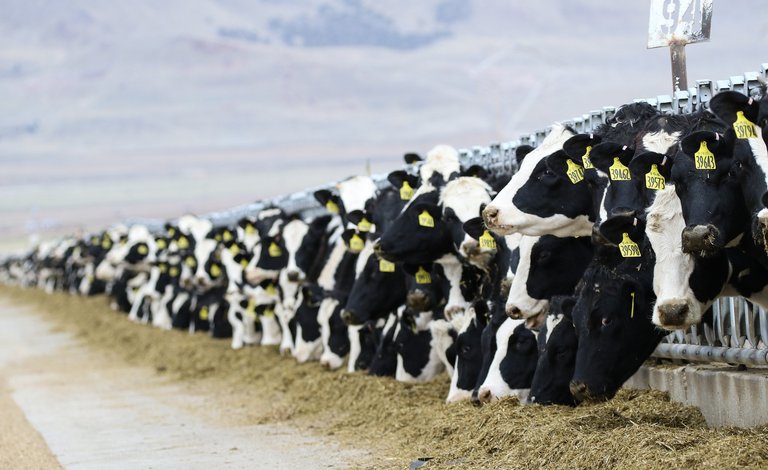H5N1 avian influenza virus can be transmitted between mammals through cow's milk

The avian influenza virus H5N1 can be transmitted among mammals through cow's milk, according to a study published in the journal Nature.
The researchers isolated the virus from the milk of an infected cow in New Mexico and found that it reproduced in mice and ferrets, and that in both animals it reached the mammary glands. In addition, they observed that the virus spread from infected mice to infected puppies.
It is known that there is a significant amount of virus in cow's milk, and in one of the latest communications, the U.S. Department of Agriculture announced that 66 mice surrounding a cowboy tested positive, but the contamination chain was unclear. This study has confirmed that these viruses present in cow's milk are able to pass to other mammals and reproduce in them.
More and more mammals are detecting the avian influenza H5N1 virus and, since April 2024, four cows in the United States have also been affected. Faced with this situation, the European Centre for Disease Prevention and Control (ECDC) has published a press release recommending increased surveillance of these viruses.
“We are experiencing the largest avian influenza epidemic in history,” explains Elisa Pérez Rámirez, a viral veterinarian at CSIC, in SMC Spain. “Its influence on the poultry industry and wildlife has been devastating. And, moreover, it has gradually acquired greater ability to pass on to mammals, first to wild ones (in South America it has caused the mass deaths of marine mammals, for example), then to the minths of the farms of Spain and Finland, to house cats, and finally, the most unexpected and possibly more worrying leap: dairy cattle in the United States. Subtypes of this type have never been found in ruminants, so we are facing a completely new scenario.”
The latter study also found that viruses isolated from cow's milk have a high affinity with both the receptors it uses to access bird cells (alpha 2,3) and mammalian receptors (alpha 2,6). “These receptors are found in the upper respiratory tract of humans and, therefore, in H5N1 this particular genotype can have more ability to infect and transmit among people,” explains Pérez.
“This is the first time that an avian influenza virus has the ability to bind not only with the receptors of bird cells but also with the cells of mammals and, although ineffectively, it can also be transmitted from the air between ferrets,” added Pérez. “All of these results indicate that there is a great potential for transmission among mammals and that, therefore, this particular subclass has a greater potential for a pandemic. With this new information, the importance of closely caring for the H5N1 virus is even more evident.”
Buletina
Bidali zure helbide elektronikoa eta jaso asteroko buletina zure sarrera-ontzian











